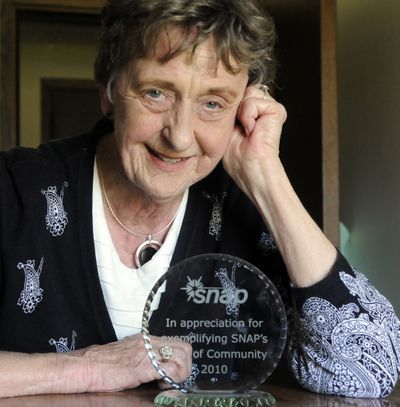Face Time: SNAP coordinator has helped thousands keep warm

Margaret Belote, energy program coordinator at SNAP, is retiring at the end of this month after 33 years of service to the community.
During her time at the private, nonprofit social service agency, she has helped thousands of low-income Spokane residents get through the winter months by managing local distribution of the federal Low Income Home Energy Assistance Program and other heating assistance programs.
The Spokesman-Review interviewed her about her career in helping some of Spokane’s most vulnerable residents.
Q. How did heating assistance get its start?
A. When I came into it in 1979, it only helped a few people. The Department of Social and Health Services had been distributing it to households already on their rolls. (LIHEAP was established as a block grant to the states in 1981.) Washington community action agencies took over distribution in 1985.
Q. How does it work?
A. A household is assisted once per year. The grant is based on how many people live in the household, what the household income is, and previous-year heating costs. The household with the lowest income and the highest heating cost gets the biggest benefit – about $1,000. The average payout is about $485.
Applicants may get an appointment by calling (509) 242-2376 or visiting snapwa.org.
By the end of the month we will have helped about 14,000 households with $7.5 million in LIHEAP funding during the 2010-’11 season. Other help is available from other funding sources.
Q. What do you hear from the people you have helped?
A. Letters come from people who benefited from the programs. There was a little note from the children of a woman we helped, thanking us. Sometimes children draw pictures on the notes. Some of (the letters) are kind of sad, saying they would not have had heat if not for the assistance.
One letter was from a lady who thought she had cancer. It was a stressful thing for her, wondering how she was going to pay her heat bill when she had her medical expenses. We see so many more of these in the last couple of years, so many young, people with medical issues or who are struggling to get Social Security disability.
It’s rewarding work. Any one of us could be in this position that suddenly we need to have this help.
Q. What changes have you seen over the years?
A. Two or three years ago we started noticing a big increase in new poor – households that had never received any kind of assistance like this – who had lost their jobs or had their hours cut.
Q. Are you expecting funding cuts?
A. This season, we won’t know for sure. Obama’s budget recommends cutting back to 2008 funding levels, about $3.2 billion. That would mean about $5 million for SNAP. There are other proposals in the House and Senate, but one of the things standing in the way of all this is the debt ceiling. LIHEAP is on the chopping block in that discussion, but it’s not the only program at risk.